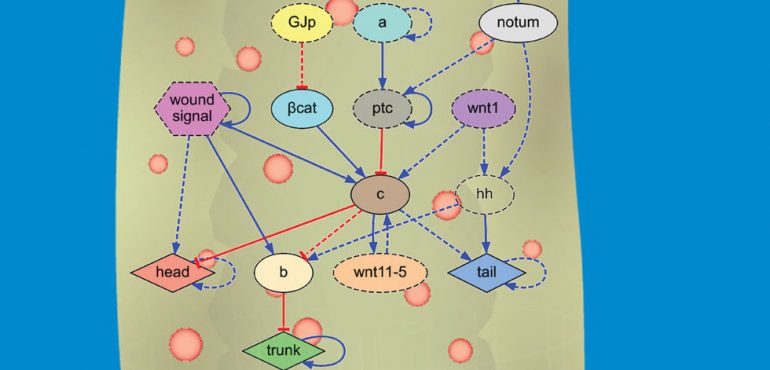Big data—and big processing power—is a big deal for science. By crunching massive amounts of data billions of times faster than could be done by hand, computers have allowed scientists to discover faraway planets, unravel our genetic code, and even find the subatomic particle responsible for gravity. But imagine a future in which computers don't just use their awesome power to help scientists. Imagine a future in which computer can come up with useful scientific ideas and hypotheses all on their own.
Well, that just happened. As they report in the science journal PLOS, Michael Levin and Daniel Lobo, two computer scientists/biologists at Tufts University, have programed a computer that independently created its own scientific theory. It's one that may solve a 120-year-old mystery in biology that has eluded even our best explanations: exactly how the genes of a sliced-up flatworm conduct its symphony of cells when they regenerate into new organisms.
"We picked this problem because it really is incredibly interesting," Levin says. "These worms are basically immortal, you can cut them up and they continuously form new organisms. And why that happens could be key to developing everything from regenerative medicines to designing self-repairing robots."
A silicon theorist
Simply put, Levin and Lobo's computer attempted to mimic real-life studies over and over again in an excruciatingly-detailed simulation. The machine would randomly guess how the worm's genes formed a regulatory network that allowed for this amazing regeneration, then let that genetic network take control in a simulation, and finally measure how close the results were to real experimental data. If its guesses were good (meaning the gene network made the simulated worm regenerate similarly to real-life experiments), then the machine slightly modified the random genetic network it had created, and tried again until its model was even better.
This may sound simplistic, but after three days of constant guessing, simulating, evaluating its guesses, and tweaking its tactics, the computer had invented a core genetic network that faithfully matched every one of the hundreds of experiments in its database. Essentially, it had explained what scientists had failed to—how the genes connect.
Levin and Lobo are quite adamant that what they programed their computer to do "is not just statistics or number-crunching," says Levin. Through trail and error, the computer invented an accurate model of the inner-workings of the flatworm. "The invention of models to explain what nature is doing is the most creative thing scientists do. . . this is the heart and soul of the scientific enterprise," he says. "None of us could have come up with this model; we (as a field) have failed to do so after over a century of effort."
Hava Siegelmann, a computer scientist and biomedical engineer at the University of Massachusetts who was not involved in the research, applauds the the team's inventive work, and also agrees with Levin's claim that this is more than just 'statistics or number-crunching.'
The rise of the computer scientist
Although the computer needed just three days to solve the flatworm genetics problem, Levin says that it took years and years to design and prepare the computer program. For one thing, the duo had to track down hundreds of scientific experiments performed on flatworms just to translate those experiments into a massive database for the computer—essentially giving the machine rigidly structured raw material. They even had to devise a personalized formal computer language that fit the data they needed to describe.
Despite the difficulty, Levin believes this entirely computer-driven trial-and-error approach to developing scientific models and theories could be used across many disciplines of science, especially where there's too much data (or the data are too complicated) for the human brain to fully comprehend.
"This problem, and our approach, is nearly universal. It can be used with anything, where functional data exist but the underlying mechanism is hard to guess," he says. In the near future, we will likely see increasing insights into basic science driven by similar computers.
Indeed, Levin is already applying this same approach to a radically different question in biology: How cancer begins to spread throughout the body, also known as metastasis. "As long as you tweak the formal language, build the database of facts in your field, and provide an appropriate simulator, the whole scheme can be used for many, many applications," he says.
Source: Popular Mechanic, Full Article



